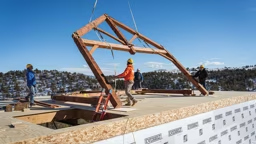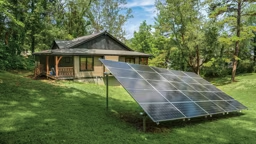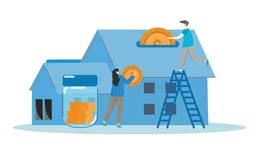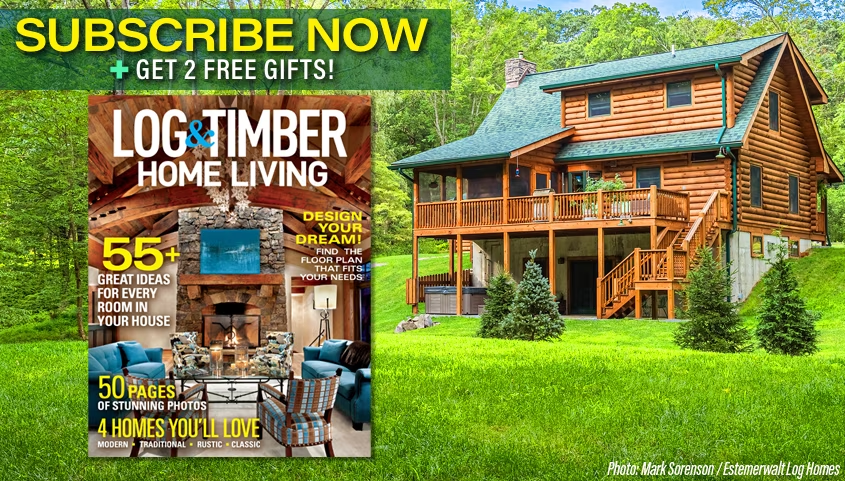
Photo: Mark Sorenson
We met up with several companies at the Log and Timber Home Show in Denver and had them share their expertise on everything from SIPs and energy efficiency to financing your dream home. Check out their answers below:
Heavy Timber Truss and Frame
Can you shed some light on Heavy Timber Truss & Frame's process to achieve an energy-efficient home?
Heavy Timber Truss and Frame is passionate about timber framing as well as energy efficiency. It all starts in our design process that includes virtually walking through a proposed design and seeing all the facets of the home, including the timber framing. The energy-efficient products and thicknesses are taken into consideration early in design. Typically, we first consider the flow of the floorplan. Then we move on to illustrating some really cool timber framing, and then we work on the exterior & interior elevations of the home. It all calls for a lot of conversation about the design, budget and how the new home will fit the land.What are SIPs?
SIPs defined are Structural Insulated Panels. These laminated wall and roof systems not only offer excellent R-Values but also have very few seams, which limit air infiltration. These two factors create a very energy-efficient envelope. SIPs are panels as large as 8’ X 24’, which means large wall and roof areas can be covered quickly and with very few seams. There is significant planning involved because SIPs are pre-fabricated at the shop, including cutting out window and door rough openings as well as all wall and roof panels. This saves an enormous amount of installation labor on-site.SIPs are perfect for creating hybrid homes so you can have a consistent envelope when there is the combination of timber framing in some areas of the home and SIPS alone creating other areas of the home. SIPs are a stand-alone product in that you don’t need timber framing to use SIPs in any area of the home.
Why should one consider using insulated concrete forms in their timber frame home?
Insulated Concrete Forms (ICFs) are used for foundations as well as above-grade for walls and floor systems. The R-Value of ICFs surpass conventional foundation systems. When using SIPs for the walls and roof of a home, in combination with ICFs for the foundation, it creates a perfect, energy-efficient envelope from below grade up to the highest ridge beam. It is possible to achieve a high degree of accuracy in having level, square, plumb and spot-on dimensions when the ICFs are in place prior to locking everything in when the concrete is pumped into forms. Insulated Concrete Forms are also very owner-builder friendly.US Bank
What can people who attend your budget and finance presentation look forward to learning about?
The presentations at the shows will focus on what is required to do a construction loan and how they work. This includes down payment requirements, interest rates, closing costs, the draw process as well as important details of a project that should be discussed with the lender up front.When trying to find the right lender, do you have any pro tips?
I recommend looking for a mortgage consultant that is experienced with construction financing. These loans are much more difficult to process than a purchase or refinance due to the addition of the project documents including getting the builder approved, obtaining plans, specs, cost to build and the contract. It is also important to insure the lender is experienced in log and timber frame financing. During the interviewing of the lender, the client should fully explain their project details to the best of their ability to make sure the lender can actually help them, including the type of home (log or timber frame), how large the lot is (how many acres), if it is zoned to be agricultural, and if they done any pre-start activity to the project, etc. Clients typically have many questions during the process and they will need an expert they can rely on.What is one thing people always overlook when it comes to their log and timber frame budget?
The main thing that isn’t always thought about upfront is cost overruns. A builder provides the client with the cost to build the home but many times the client chooses items that exceed what is in the budget. If the cost exceeds the budget line item, the client will need to pay for the overage out of pocket. It’s a good practice for a client to have excess cash after closing just in case something like this occurs. Another solution is to build a contingency line item into the budget to cover any overages. This extra cost increases the overall project cost and the appraisal must support the higher value if the client is financing the project.
See also: Questions & Answers From Log Home Experts











